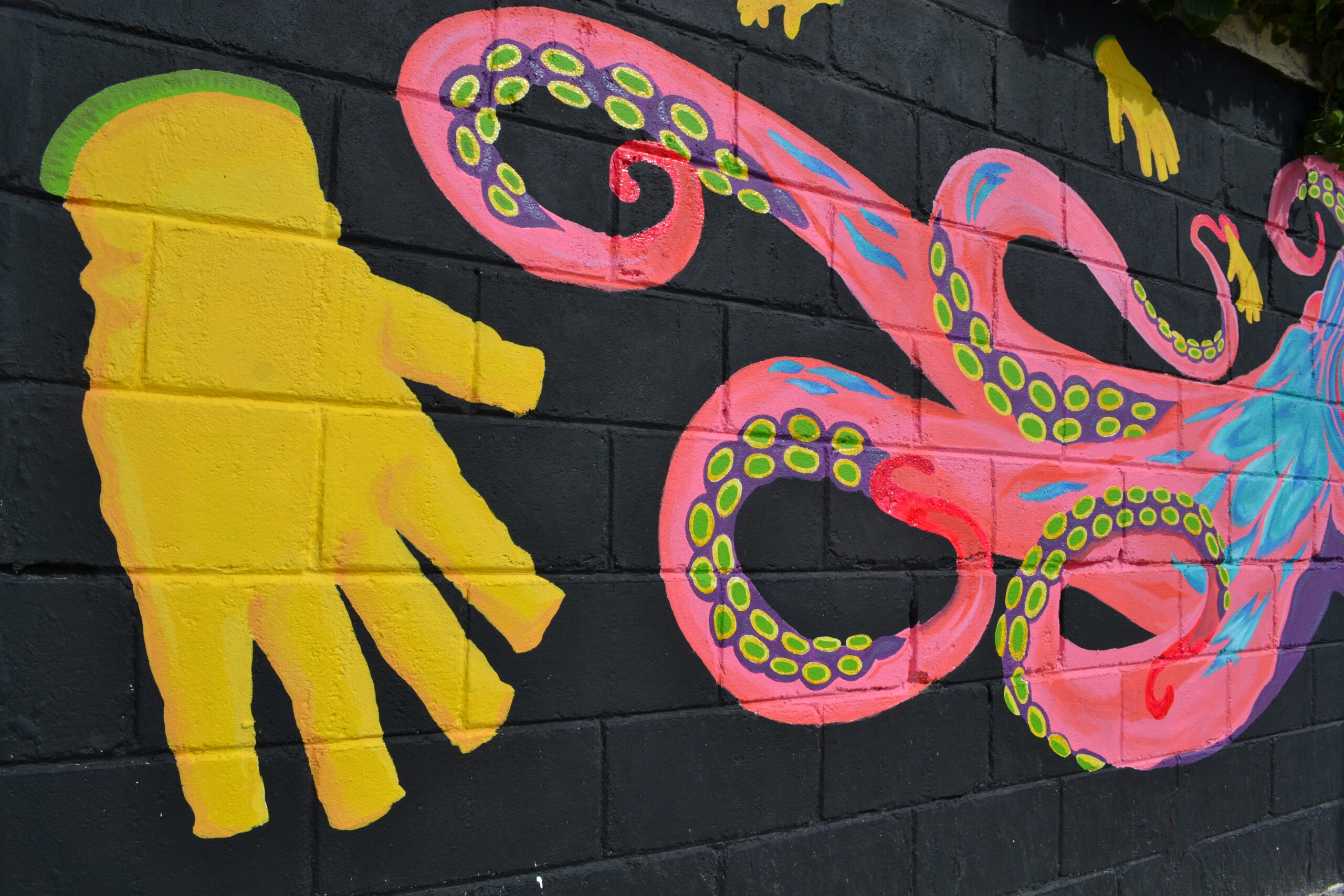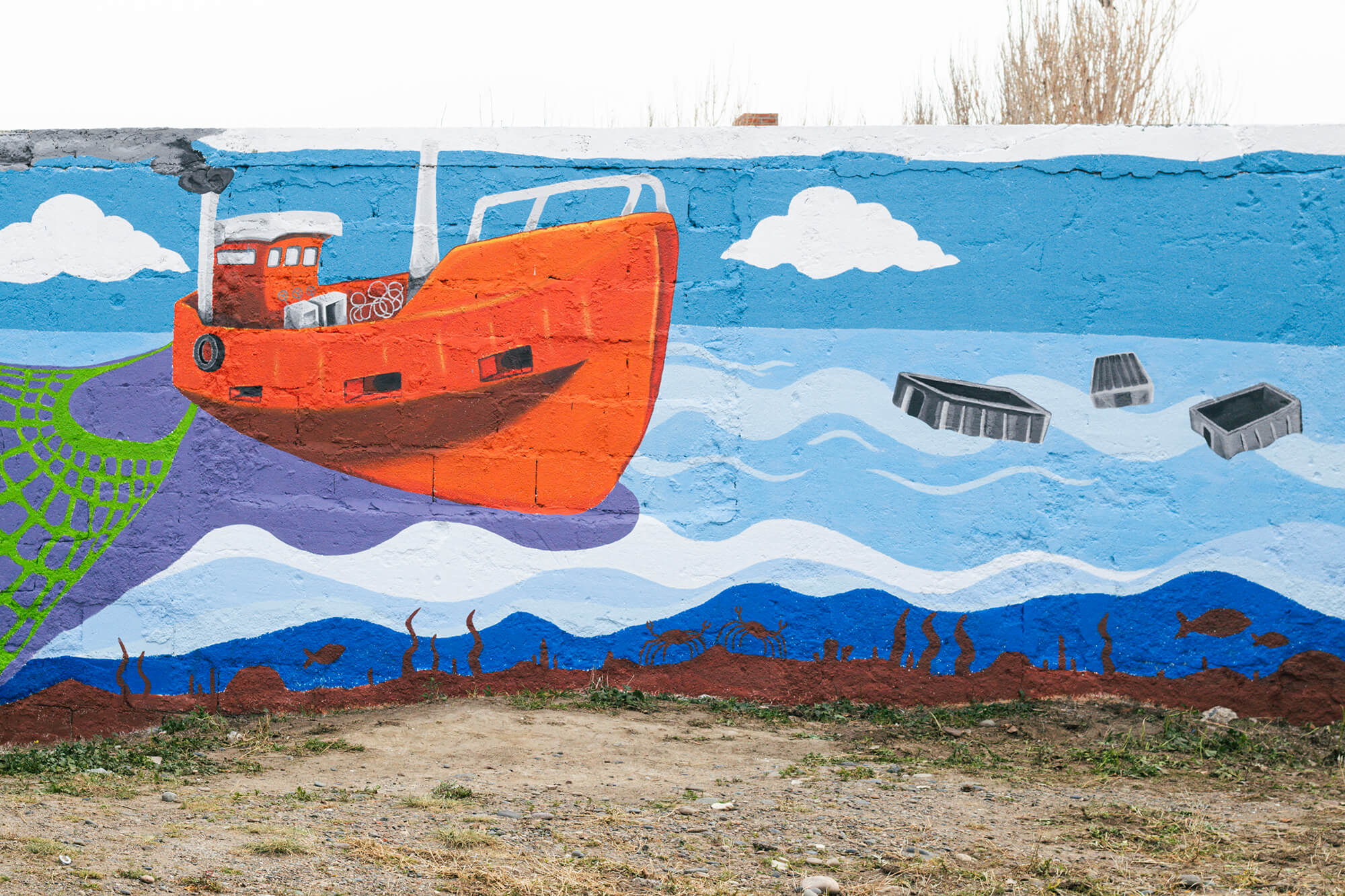
Due to its unique physical features, the Argentine Sea is one of the richest in biodiversity globally. Its waters are home to emblematic species such as majestic whales, cute penguins, dolphins and sea lions. It also hosts a wide variety of birds and fish of great economic and ecological importance, contributing to the balance and health of marine ecosystems.
In addition to its famous faunal diversity, the Argentine Sea is also home to numerous lesser-known species. Among them, we can mention sharks, fish, crustaceans and other invertebrates who play crucial roles in the marine ecosystem. This mural seeks to bring visibility to these 'hidden treasures' that often go unnoticed, promoting greater awareness and appreciation of the biodiversity of the Argentine Sea.
Better understanding the variety of species and their ecologic needs is fundamental for making informed and effective decisions in the conservation of our oceans. Through environmental education, we seek to promote actions that ensure the preservation of the natural balance of the Argentine Sea. Among these actions, the creation of Marine Protected Areas stands as a key conservation strategy, ensuring that all components of an ecosystem can thrive in a healthy and sustainable environment.
What is this mural trying to show us?
ELEPHANTFISH (CALLORHINCHUS CALLORYNCHUS)

The Elephantfish (Callorhinchus callorynchus) is a singular species of the Argentine Sea, which is characterized by a distinctive appearance due to its extended snout and its silver color with blotches. This fish is a type of chimaera, fish that are considered to be living fossils because of their evolutionary antiquity.
Together with sharks and rays, they belong to the chondrichthyan class (fish with cartilage skeleton), but diverged from these groups approximately 400 million years ago, developing unique characteristics such as the tenaculum, a structure placed on its head that is believed to be used during mating.
The Elephant Fish lives on the seabed and feeds on crustaceans, mollusks and other invertebrates, contributing to the balance of the marine ecosystem. However, its conservation status is of concern due to the fishing pressure. The Elephant Fish is the species most frequently targeted by intentional fishing in the trawling fleets of the Argentine Sea, a situation that severely impacts the conservation of most chondrichthyans.
It's essential to promote environmental education and to adopt sustainable fishing practices to protect this and other vulnerable species. The conservation of this animal not only preserves a unique and ancient species but also maintains the health and balance of the marine ecosystems of the Argentine Sea, benefiting all species that depend on these habitats.
ARGENTINE SEA BASS (ACANTHISTIUS PATACHONICUS)
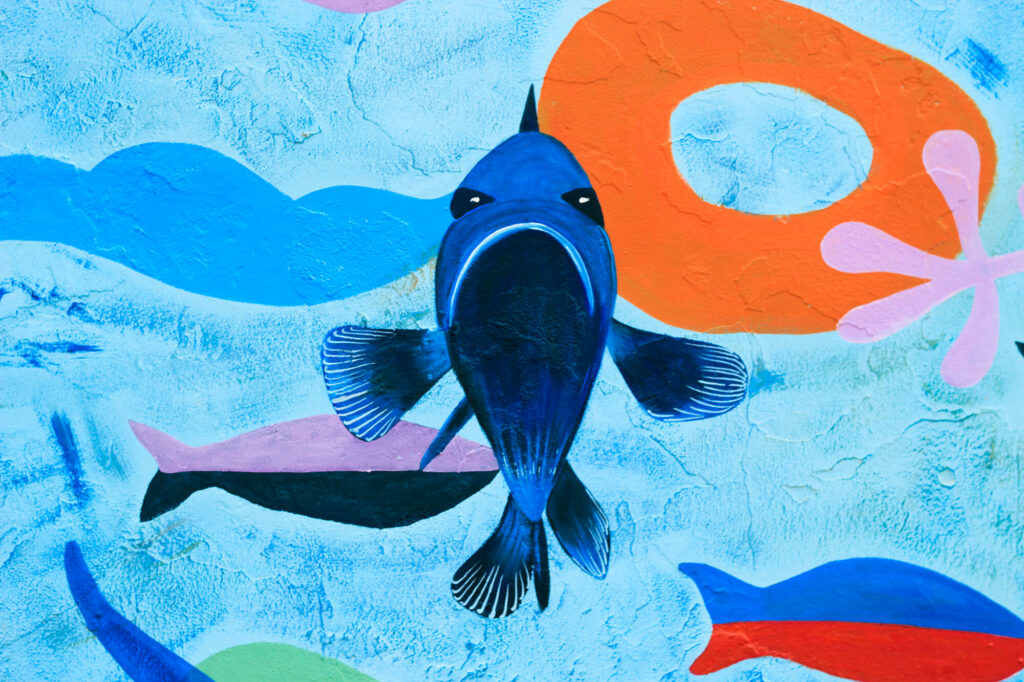
The Argentine Sea Bass is a fish that lives in the cold waters of the Southwest Atlantic, especially in the region of the Patagonia. It prefers habitats such as rocky reefs and coastal areas with hard bottoms, where it finds shelter and food at depths between 10 and 100 meters.
This fish is an important predator who feeds on smaller fish and marine invertebrates, contributing to maintaining the balance of their prey populations. In addition, it’s a prey for bigger predators, such as sea lions and sharks, thereby contributing to the food chain.
Although the Argentine Sea Bass is not currently in danger of extinction, it faces threats such as overfishing, which can significantly reduce its population, and the destruction of its habitats due to human activities and pollution. Climate change also poses a risk, altering its environment and food sources.
To protect this and other species, it is crucial to employ sustainable fishing practices and conserve its natural habitats through the creation of Marine Protected Areas that preserve its critical areas for life and reproduction. Learning more about this species and its needs helps us make informed decisions to maintain the balance of the marine ecosystems.
SCHOOL SHARK (GALEORHINUS GALEUS)
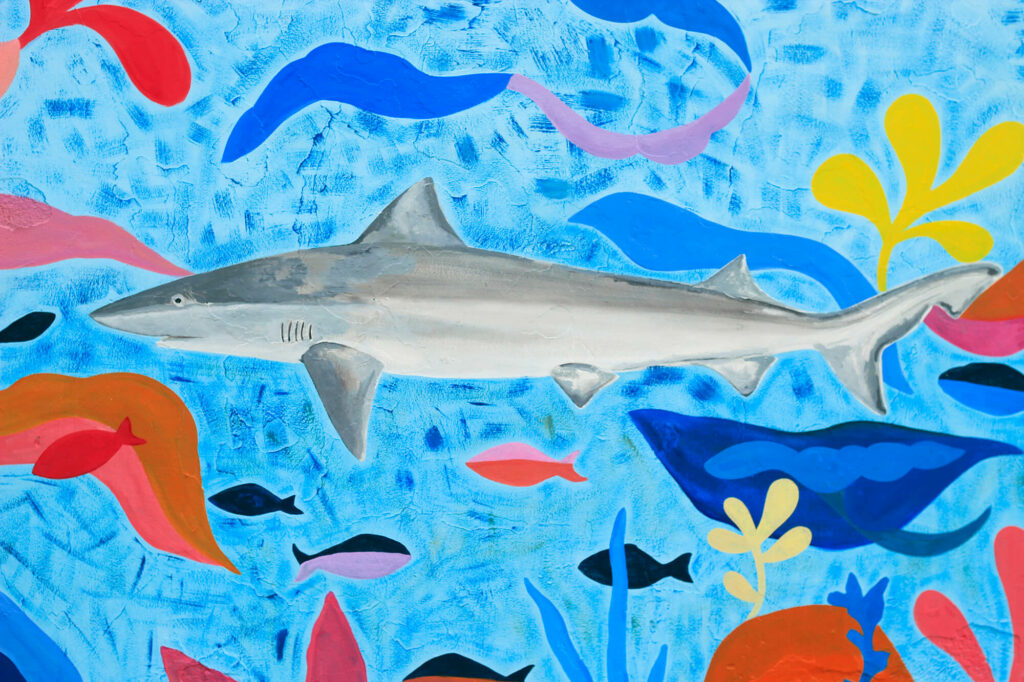
The Argentine Sea is a particularly diverse ecosystem, rich in endemisms and with high biomass of some species that provide a food source for migratory animals and predators, such as sharks. Our Sea is home to more than 50 shark species, which, just like large terrestrial predators, play a crucial role in maintaining the health and stability of marine ecosystems. Sharks help control their prey population and ensure biodiversity, contributing substantially to the balance and functioning of these ecosystems.
Despite of this, they are one of the most threatened animals of the planet due to their particular vulnerability to human threats. This vulnerability is attributable to life and developmental characteristics such as longevity, late sexual maturity (over 5 years), and low fecundity, that is to say, they have few offspring per litter, and these occur every 1 to 3 years.
The School Shark (Galeorhinus galeus), also known as the Tope Shark, Snapper Shark, and Soupfin Shark is one of the most famous sharks of Argentina. This is largely because it is one of the main species caught by recreational fisheries and as bycatch in industrial fisheries (longline and trawl). This increasing fishing pressure has resulted in the School Shark now being classified as “CRITICALLY ENDANGERED”, according to the International Union for Conservation of Nature (IUCN). For species that meet these criteria, urgent conservation actions and fishery management measures are recommended to aid in their recovery.
SMALLNOSE FANSKATE (SYMPTERYGIA BONAPARTII)
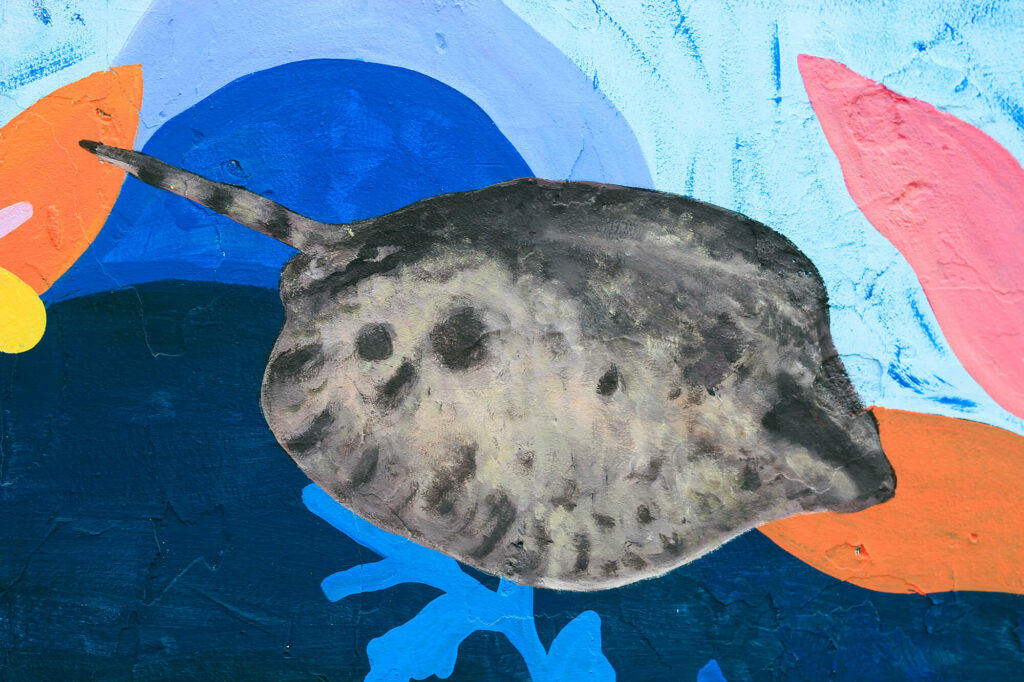
The rays of the Argentine Sea are fascinating creatures and are part of the rich marine biodiversity in the region. Among them, the Smallnose Fanskate is especially interesting due to its distinctive pattern of blotches and stripes on the skin that gives it its name. This natural camouflage helps it hide from predators and hunt its prey on the seabed.
Rays, also known as skates, are closely related to sharks, as both, along with chimeras, belong to the Chondrichthyes class (cartilaginous fish). This means that, instead of having a bony skeleton like most of the fish, their skeleton is made of cartilage, a more flexible and lightweight material. This characteristic gives them a great agility and endurance, both in hunting and in defense.
Their diet is based mainly on crustaceans, mollusks and small fish found on the seabed. In this way, it contributes to maintaining the balance of the marine ecosystem, as it controls the population of its prey and helps to keep the seabed clean. This ecological role is fundamental for the health of the marine ecosystem of the Argentine Sea.
Despite its ecological relevance, rays face threats due to overfishing and habitat degradation. Conservation of this species is crucial, and environmental education plays a vital role in raising awareness on the importance of protecting rays and other marine habitants. Promoting sustainable fishing practices and the creation of Marine Protected Areas are essential actions to ensure that this and other species of the Argentine Sea continue to thrive.
PATAGONIAN RED OCTOPUS (ENTEROCTOPUS MEGALOCYATHUS)
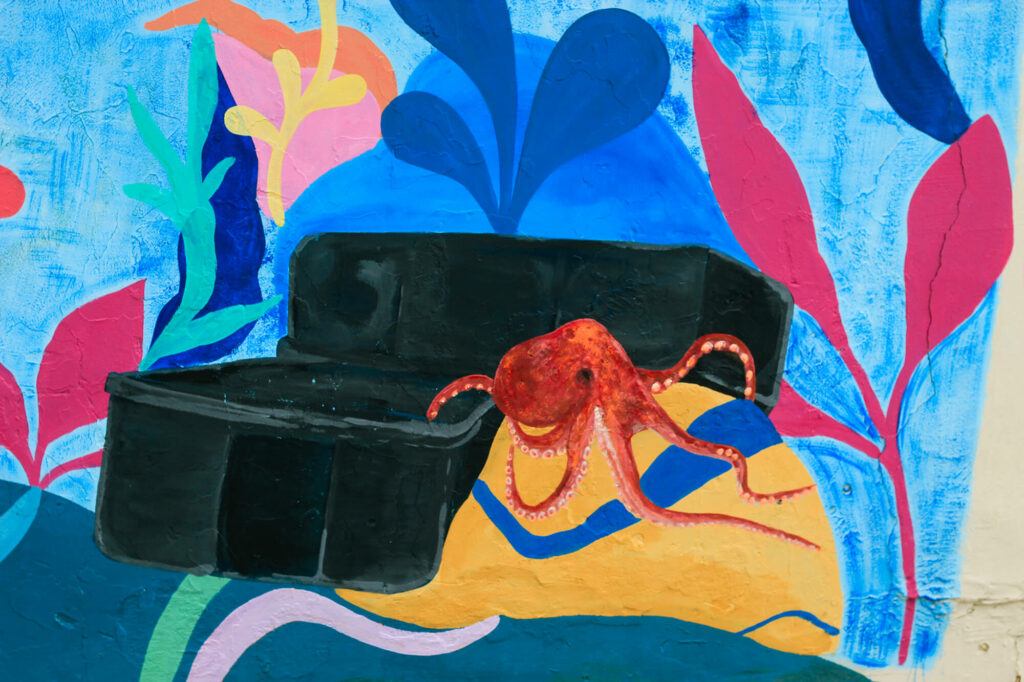
The Patagonian Red Octupus (Enteroctopus megalocyathus) lives in the cold waters of the Argentine Patagonia. It’s one of the biggest octopuses of the region, with a magnitude that can exceed 1.5 meters and a weight of up to 7 kg. Its red or brown color helps it camouflage in rocky and sandy marine environments.
This octopus is very clever and has interesting behaviors. It can open shells of mollusks and crustaceans, its favorite foods, and sometimes uses tools to get food. Its varied diet includes many marine invertebrates and some fish, which makes it an adaptable and skilled hunter.
In terms of its reproduction, the female lays hundreds of thousands of eggs in safe places such as crevices and cavities, and unfortunately in objects she finds such as fishing crates. During the development of the offspring, their mother will stay with the eggs until they hatch. She dedicates all his effort to protecting and oxygenating the eggs, which means she cannot leave to feed herself; for this reason, she will die shortly after the offspring are born. This sacrifice ensures that many offspring will survive, demonstrating a life strategy that requires a very dedicated maternal care.
